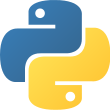 Language
Language
- Python 2
- Python 3
 Reading time
Reading time
- Approximately 16 days
 What you will learn
What you will learn
- Programming Basics and Python Syntax
 Author
Author
- Jason Cannon
 Published
Published
- 10 years, 10 months ago
If you want to learn how to program in Python, but don't know where to start read on.
Knowing where to start when learning a new skill can be a challenge, especially when the topic seems so vast. There can be so much information available that you can't even decide where to start. Or worse, you start down the path of learning and quickly discover too many concepts, commands, and nuances that aren't explained. This kind of experience is frustrating and leaves you with more questions than answers.
Python Programming for Beginners doesn't make any assumptions about your background or knowledge of Python or computer programming. You need no prior knowledge to benefit from this book. You will be guided step by step using a logical and systematic approach. As new concepts, commands, or jargon are encountered they are explained in plain language, making it easy for anyone to understand.
Here is what you will learn by reading Python Programming for Beginners:
- When to use Python 2 and when to use Python 3.
- How to install Python on Windows, Mac, and Linux. Screenshots included.
- How to prepare your computer for programming in Python.
- The various ways to run a Python program on Windows, Mac, and Linux.
- Suggested text editors and integrated development environments to use when coding in Python.
- How to work with various data types including strings, lists, tuples, dictionaries, booleans, and more.
- What variables are and when to use them.
- How to perform mathematical operations using Python.
- How to capture input from a user.
- Ways to control the flow of your programs.
- The importance of white space in Python.
- How to organize your Python programs -- Learn what goes where.
- What modules are, when you should use them, and how to create your own.
- How to define and use functions.
- Important built-in Python functions that you'll use often.
- How to read from and write to files.
- The difference between binary and text files.
- Various ways of getting help and finding Python documentation.
- Much more...
Scroll up, click the Buy Now With 1 Click button and get started learning Python today!
- Works/Worked at Xerox
- Works/Worked at UPS
- Works/Worked at Amazon
